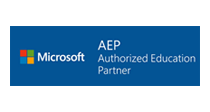Accounting and Finance
Certified Accounting Assistant
Why Attend
Accounting is the language of business. By attending this course, you will learn the basics of accounting and those of reading and analyzing financial statements. The course will equip you with the necessary knowledge to participate in the accounting activities of your organization, and to understand and use debits and credits. You will also learn to record financial transactions and report them in financial statements.
Course Methodology
This course uses a mix of interactive techniques, such as brief presentations by the consultant and the participants, in addition to demonstrating theoretical core accounting topics. The course also features real-life case studies.
Course Objectives
By the end of the course, participants will be able to:- Explain accounting rules
- Review different accounts categories
- Record financial transactions
- Perform accounting adjustments
- Practice closing and prepare financial statements
- Interpret and analyze financial statements components
Target Audience
Accounting assistants, accounting trainees, junior accountants, administrative assistants, accounts clerks, support staff, and administrative secretaries working with accounts. No prior accounting experience is required.
Target Competencies
- Understanding accounting principles
- Preparing financial statements
- Practicing adjustment entries
- Using debits and credits in recording transactions
- Understanding international financial reporting standards (IFRS)
- Performing accounting closing process

Course Outline
- Introduction to accounting
- Importance of accounting and the accounting cycle
- Accounting regulatory bodies
- International Financial Reporting Standards (IFRS)
- Generally Accepted Accounting Principles (GAAP)
- Accounting rules updates and changes
- Stakeholders and users of accounting information
- Company structures and business activities
- Accounting principles and guidelines
- Other characteristics of accounting information
- How principles and guidelines affect financial statements
- Analyzing transactions
- Identifying accounts names
- Classifying accounts
- Interpreting accounts movements
- The double entry accounting
- Debits and credits
- The importance of T-Accounts
- The 7 rules of debits and credits
- Sub-ledgers and general ledgers
- Preparing trial balances
- Adjustment process
- Adjusting assets and liabilities, revenues and expenses
- Accrued liabilities, expenses and revenues
- Deferred assets, expenses and revenues
- The process of preparing adjusted trial balances
- Adjustments for contra-accounts
- Closing process
- The four important closing entries
- Using the 10 column worksheet
- Preparing financial statements:
- Income statement
- Balance sheet
- Understanding and preparing closing trial balance
- Assets accounting and reporting
- Cash and cash equivalents
- Accounts receivable and allowances
- Inventory costing and valuation
- Recording and maintaining fixed assets
- Depreciation and accumulated depreciation
- Intangible assets and other non-current assets
- Liabilities accounting and reporting
- Accounts payable and notes payable
- Accrued liabilities
- Short and long-term loans
- Understanding shareholders’ equity
- Share capital
- Retained earnings
- Government and management reserves
REQUEST CALL BACK
Would you like to speak to one of our consulting advisers over the phone? Just submit your details and we’ll be in touch shortly.














